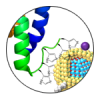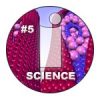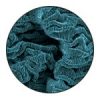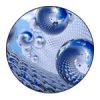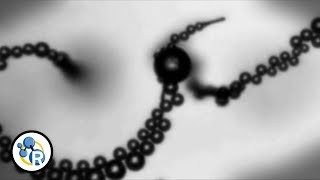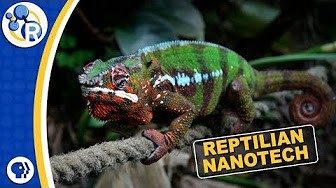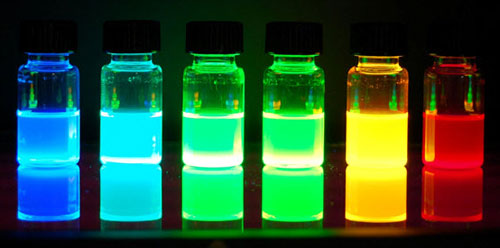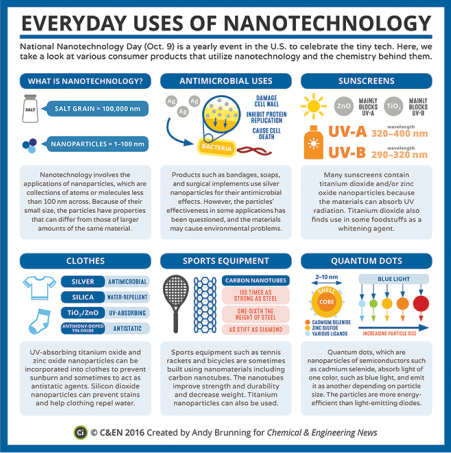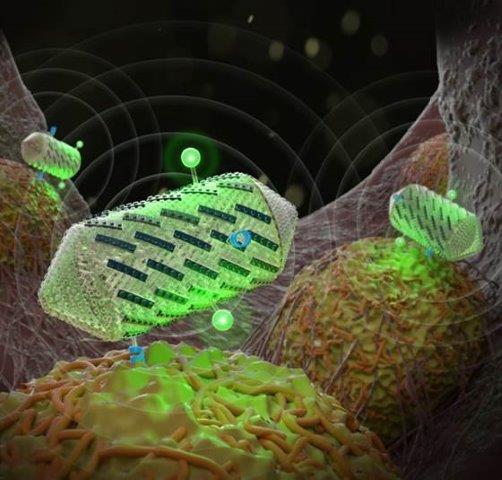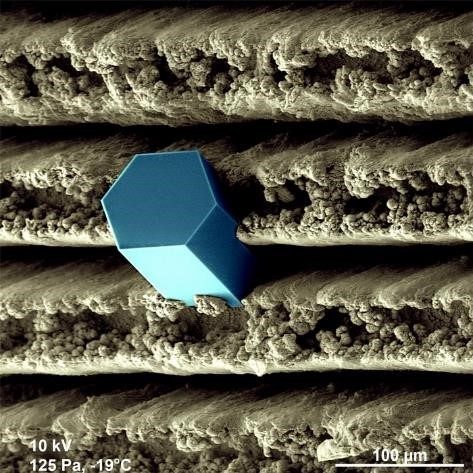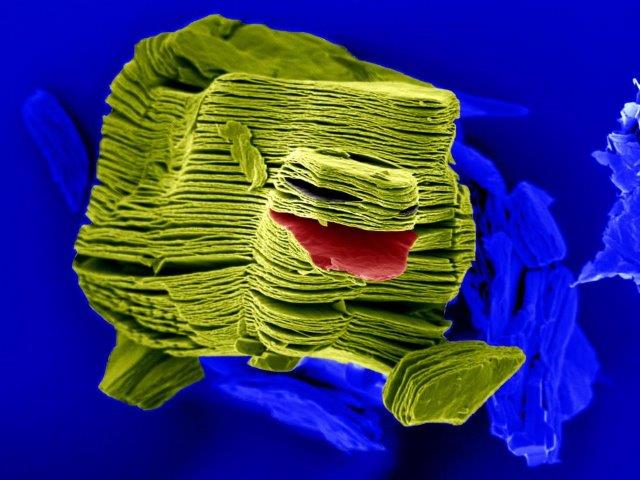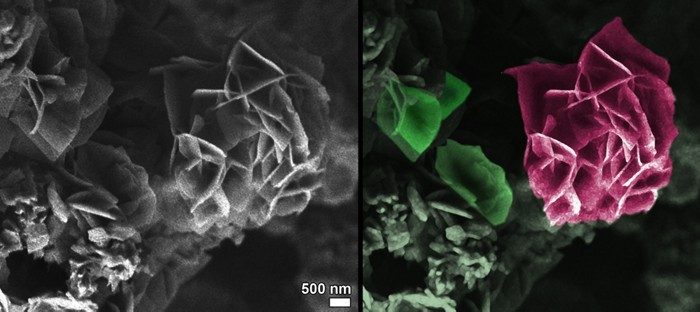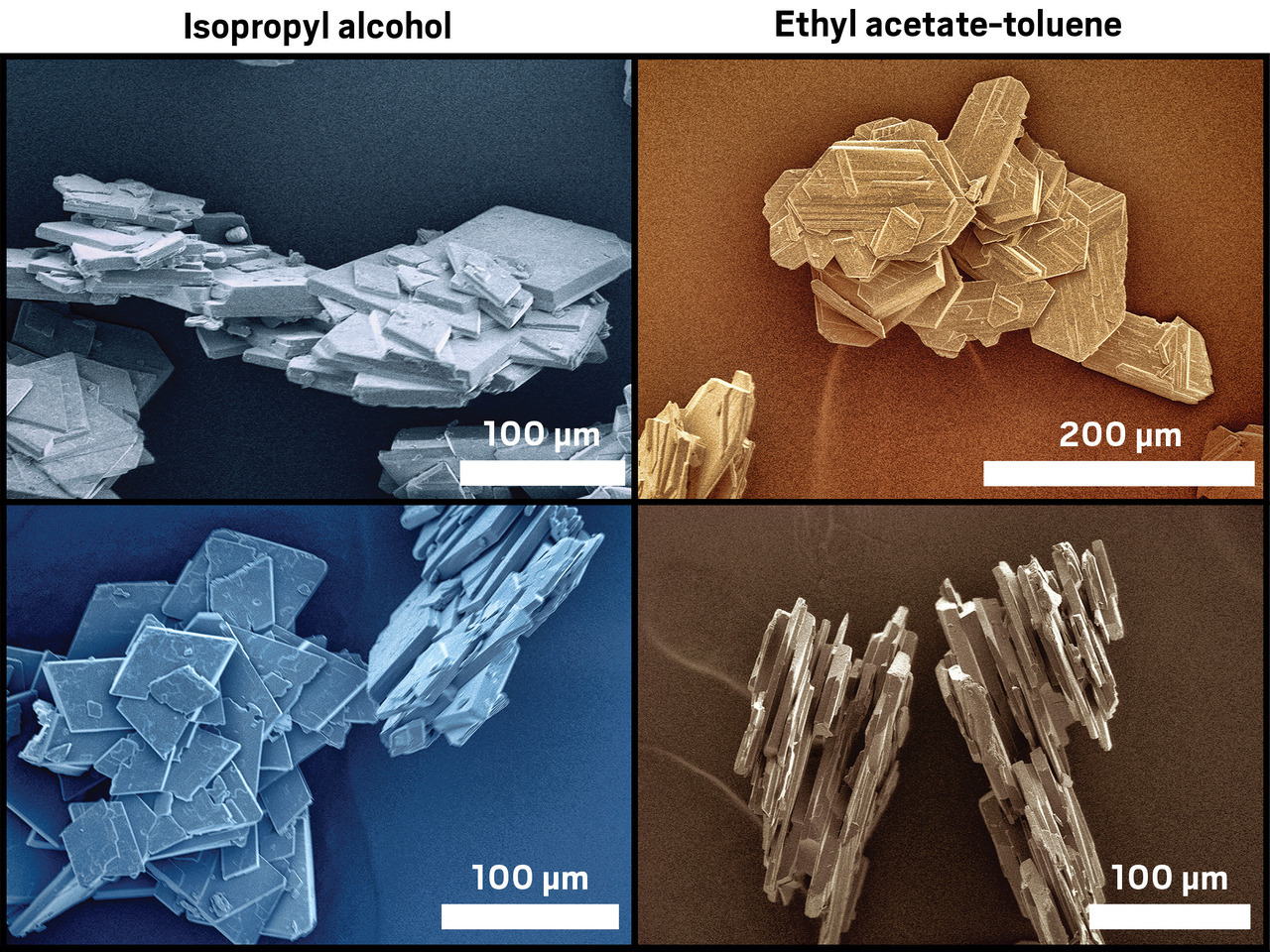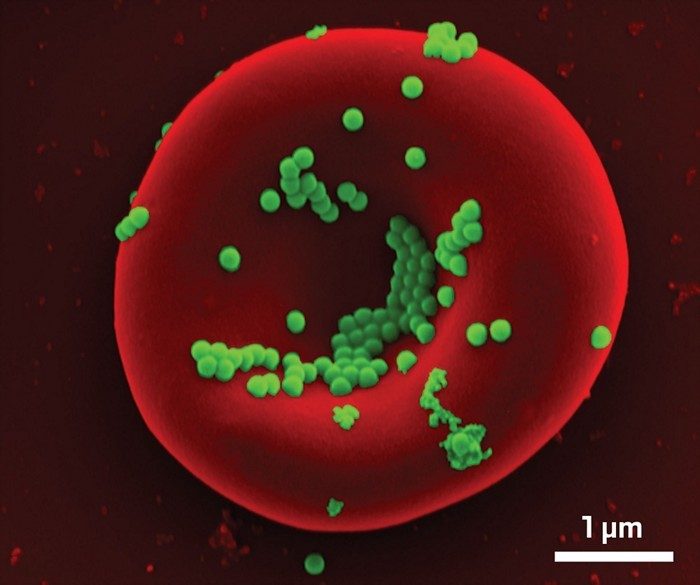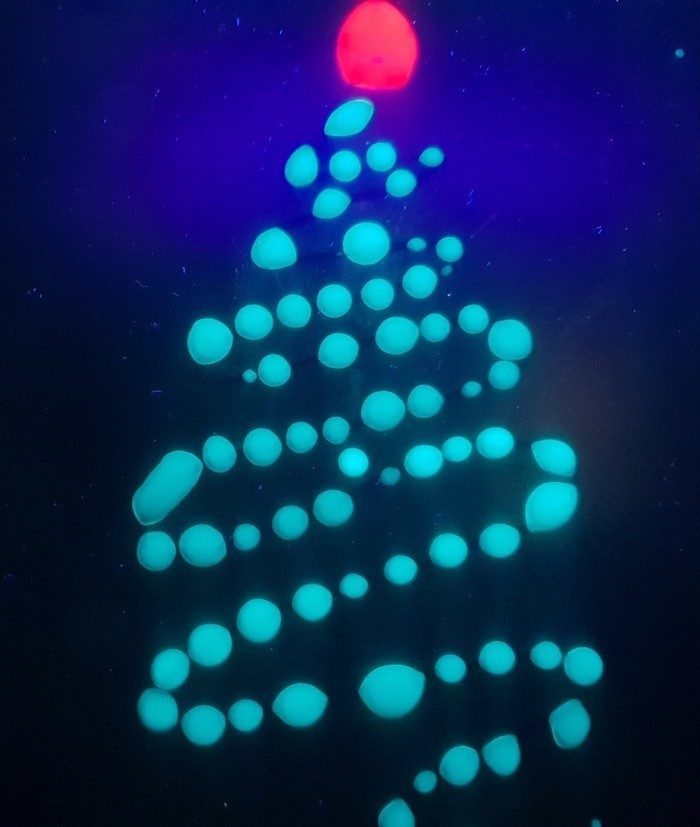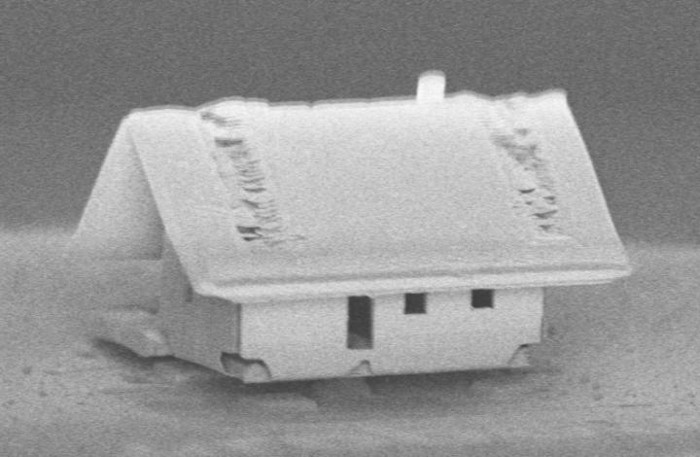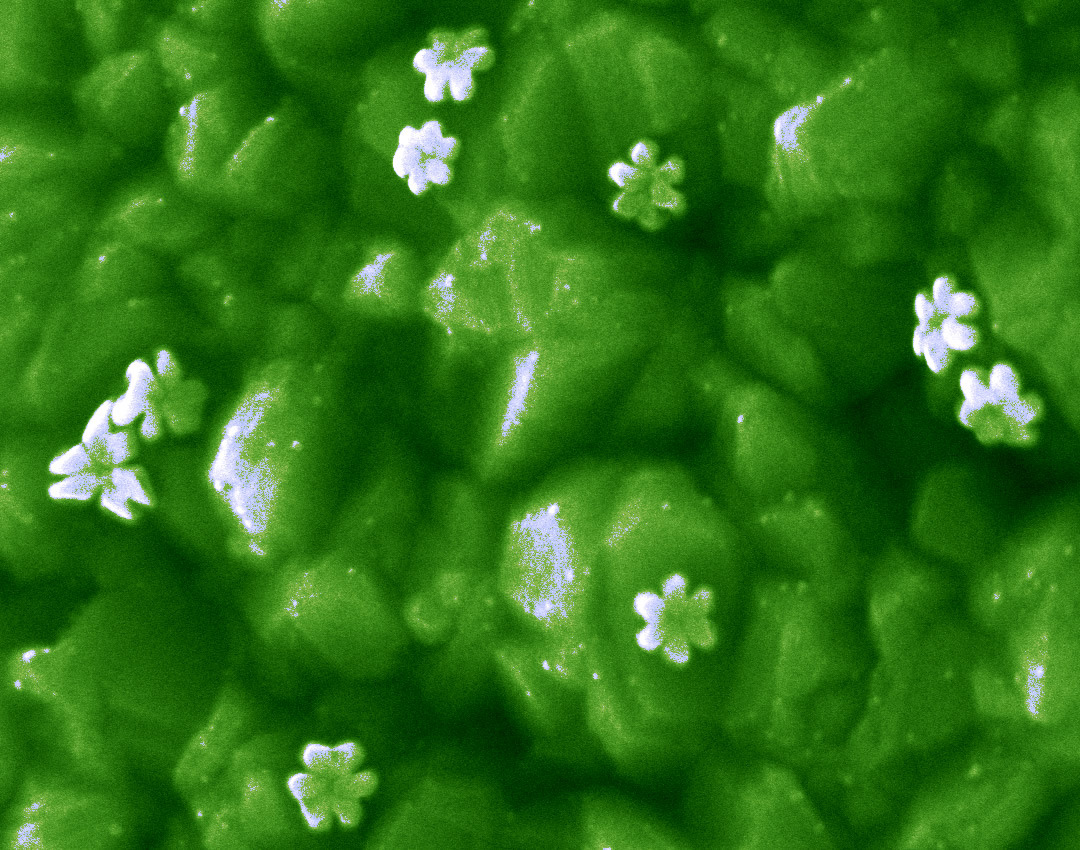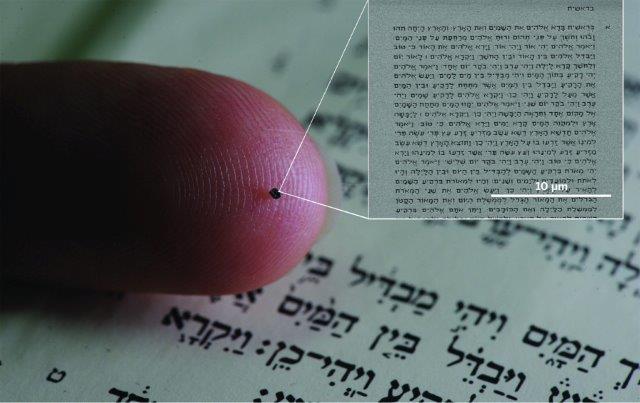Nanotechnology
What is nanotechnology?
Nanotechnology is science, engineering and technology conducted at the nanoscale, about 1 to 100 nanometers. How small is that? Pretty small: a single sheet of paper is about 100,000 nanometers thick!
At the nano level, scientists and engineers look to control individual atoms and molecules to do some pretty amazing things. Right now, researchers are using nanotechnology to push boundaries and solve major challenges in energy, health, materials science and more. Use these resources on this page to learn more about nanotechnology and what it means for our future.
Combating Climate Change with New Nanobugs: Teaching Bacteria to Eat Carbon Dioxide and Light with Quantum Dots
Prashant Nagpal of the University of Colorado Boulder discusses the development of living nano-biohybrid organisms that use sunlight to convert massive amounts of carbon dioxide, air, and water into biodegradable plastics, fuels and more.
Advances in Graphene Nanotechnology: Making the Paralyzed Walk
James Tour and William Sikkema of Rice University describe how rats that have had their spinal cords completely severed in two were restored to near perfect mobility.
Nano 2.0: Multi-scale Nanomaterials
Discover how assembling nano super-structures opens possibilities for new classes of multi-scale nanomaterials with unprecedented physical characteristics.
Nanomaterial Design Guided by the Principles of Green Chemistry
James Hutchison discusses the foundations for greener nanotechnology and presents a case study that uses nanomaterial product innovation guided by green chemistry.
Nanosafety: Emerging Research Perspectives
Chemical Safety Specialist Tilak Chandra, third-year Grad Student Katie Kruszynski, and Research Safety Manager Markus Schaufele discuss what their work in this field has taught them about safe procedures and potential hazards.
ACS National Meetings bring together thousands of chemists from around the world to present their work. Check out some of the lectures on nanotechnology.
World’s Tiniest ‘Monster Truck’ Reveals Surprising Discovery
A New Way to Diagnose Prenatal Conditions
Fighting Back Against Cancer
Electronics from Paper
Using nano to improve mammograms
Nano applications fight allergies
Classroom Resources
K-8
High School
- ACS ChemClub: Materials and Nanotechnology
- ChemMatters: Nanotechnology’s Big Impact (PDF)
- ChemMatters: Open for Discussion- Nanoparticles
- Discovery of Fullerenes Lesson Plan
Peer-Reviewed Journals
Peer-Reviewed Article Collections
ACS works with Journal Editors to create online collections of previously published research on areas of current scientific interest. The collections are designed not only for experienced investigators but also as a tool to teach students about the diverse areas of the chemical sciences. Check out some of our articles and collections on nanotechnology!
- ACS Publications Celebrates National Nanotechnology Day 2022
- Nanomaterials and Nanotechnologies (2022)
- Nanomaterials research for inorganic chemistry (2022)
- Nanoscale Science Applications in Agriculture Systems (2022)
- Raising Antimicrobial Awareness (2021)
- Nanomedicine (2021)
- Nano Day 2017: Celebrating Nano Across ACS
C&EN Articles
- Tiny magnetic robots capture pollutants and release them on demand (2022)
- Nanotube-gulping bacteria could enable living photovoltaics and sensors (2022)
- Enzyme protects bacteria from toxic gold (2022)
- Gold nanoparticle–laden contact lenses adjust for color blindness (2021)
- Construyen el espectrómetro más pequeño que existe a partir de un único nanohilo (2019)
- Nanoesferas huecas de TiO2 que combaten bacterias (2019)
- Nanoparticle mouthwash could prevent tooth decay (2018)
- Carbon nanotube net could extend battery lifetimes (2018)
- Delivering DNA on the tips of nanospears (2018)
- Nanosurfactants create droplet-sized reaction flasks (2018)
- Nanoreactors: Small Spaces, Big Implications in Chemistry (2018)
Policy
- Nano Day: Celebrating the Next Decade of Nanoscience and Nanotechnology (October 7, 2016)
A white paper offering nanotechnology policy context and advice and a look forward to the next decade for this cutting edge science.
- Nanotechnology and Lightweighting: Advancing Energy Efficiency (September 27, 2016)
Videos from a congressional briefing highlighting developments in nanotechnology and materials research that enable products to achieve the same or superior strength with less bulky designs. - Nanotechnology Education for the Global World: Training the Leaders of Tomorrow (June 16, 2016)
Proposes a learning design framework to promote the next generation of nanoscientists. Prominent among these are the abilities to communicate and to work across and between conventional disciplines. - Nantechnology: The Promises and Pitfalls of Science at the Nanoscale (December 2015)
A white paper examining the emerging science, applications, and controversies of chemistry at the nanometer scale. - Grand Challenges for Nanoscience and Nanotechnology (July 20, 2015)
Editorial on how advances in the field will enable the nano community to spearhead many discoveries and translational efforts in S&T that can serve humanity’s current and future needs.
 National Historic Chemical Landmarks
National Historic Chemical Landmarks
Careers
Nanochemists work in rapidly growing field covering biomedical chemistry, polymer chemistry, product synthesis, and a host of other areas.
Careers & the Chemical Sciences: Find out how to get a job in nanochemistry.
October 9 is National Nanotechnology Day in honor of the nanometer scale, 10-9 meters. The goal of Nano Day is to raise awareness of nanotechnology, how it is currently used in products that enrich our daily lives, and the challenges and opportunities it holds for the future.
Infographic: Everyday Uses of Nanotechnology
A look at various consumer products that utilize nanotechnology and the chemistry behind them.
Acoustic Protein Nanostructures
Gas vesicles are gas-filled nanostructures. They scatter sound waves and have customizable shells, making them potential ultrasound contrast agents.
World's Smallest Periodic Table
At only 14 by 7 μm, this teeny tiny table was etched on a silicon chip using scanning electron microscopy in honor of the International Year of the Periodic Table (IYPT).
"Icephobic" Aluminum
This blue ice crystal is embedded in an aluminum alloy surface that has been laser textured and chemically coated to help create a surface that is resistant to ice coating, making it useful for aviation.
Tiny Turtle
This happy, 9-μm-wide turtle is made from a titanium carbide (Ti3C2) MXene particle.
Nanoroses in Bloom
These exquisite nanoroses were created from common borax exposed to high temperatures and oleic acid. Under different reaction conditions, different structures can be formed.
Forming Good Habits
Scientists at Merck & Co. in Rahway, N.J., are researching these crystals, which were made by crystallizing the same small-molecule drug candidate yet have noticeably different shapes, or crystal habits.
Nanoparticle Carrier
Nanoparticles, in green, were incubated with red blood cells from mice. When reinjected through an arterial catheter, the carrier blood cells accumulate in the nearest organ which could have applications in drug delivery.
Quantum Chemistree
Semiconductor nanoparticle called quantum dots make up this festive tree. By changing the size of the particles which are chemically identical, researchers can modify electronic properties including their color.
(Really) Tiny House
Jean-Yves Rauch and colleagues at FEMTO-ST Institute constructed this 15-μm-tall house out of thin silica membranes. The team used a dual-beam scanning electron microscope and focused ion beam to erect the teeny domicile.
Silver Nanoflowers
This image was the winner of C&EN’s National Nano Day Photo Contest in 2017. Scientists at Wilfrid Laurier University made these flower-shaped silver nanoparticles. Each flower is roughly 300 nm in diameter.
Nano Bible
Measuring in at 20 nm thick and 0.04 mm² in area, the world’s smallest Bible can only be read with a microscope.

